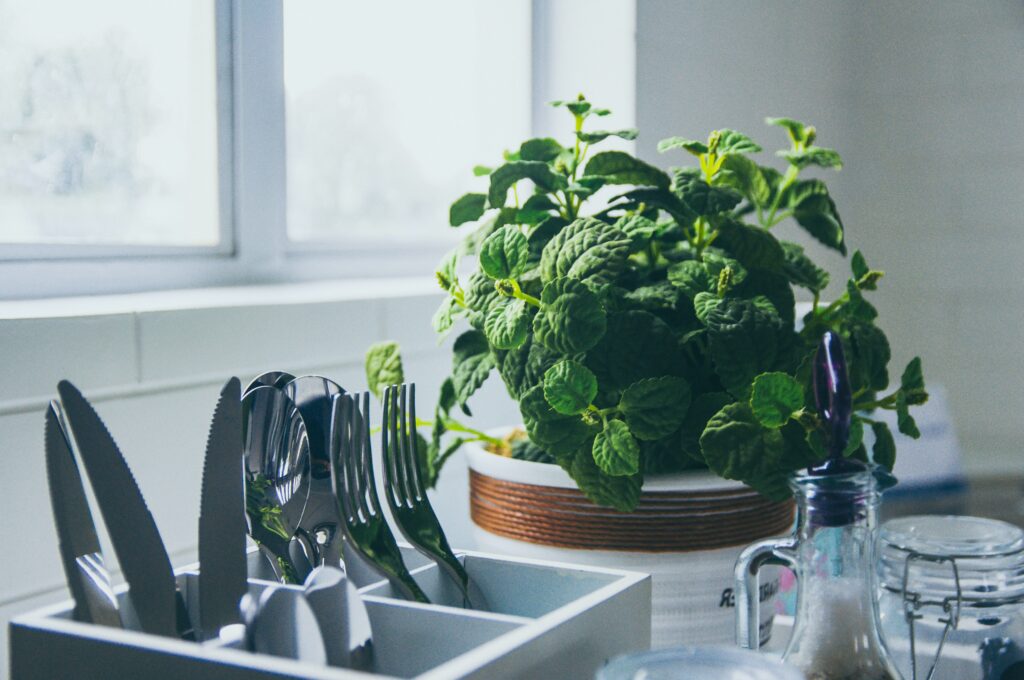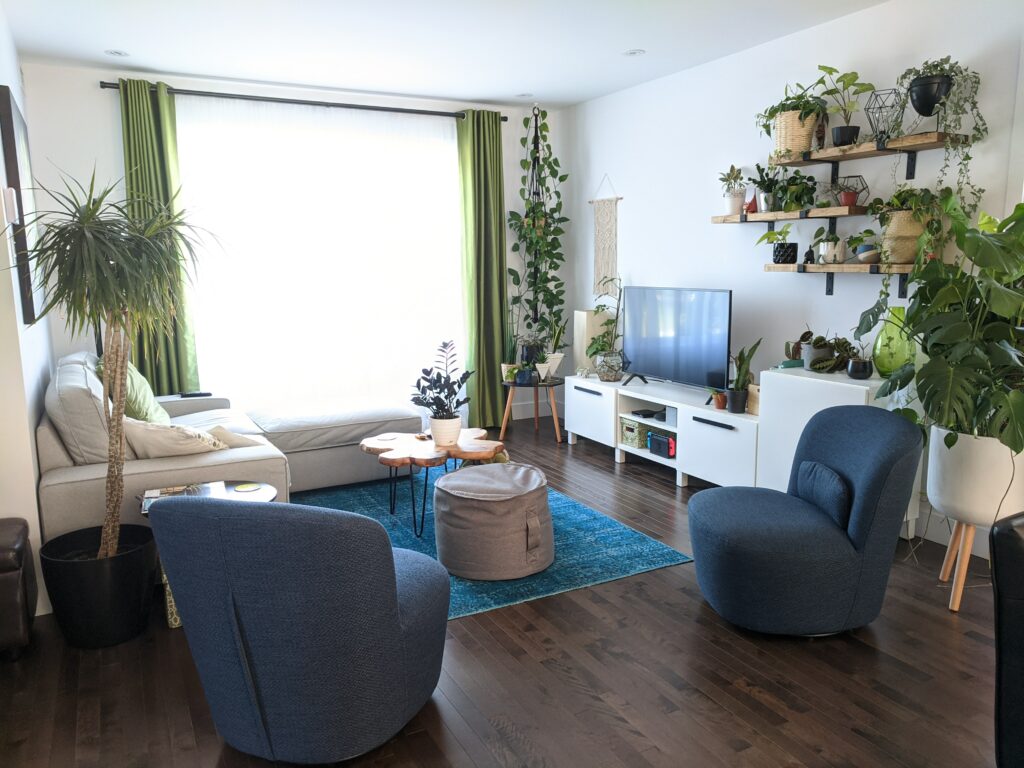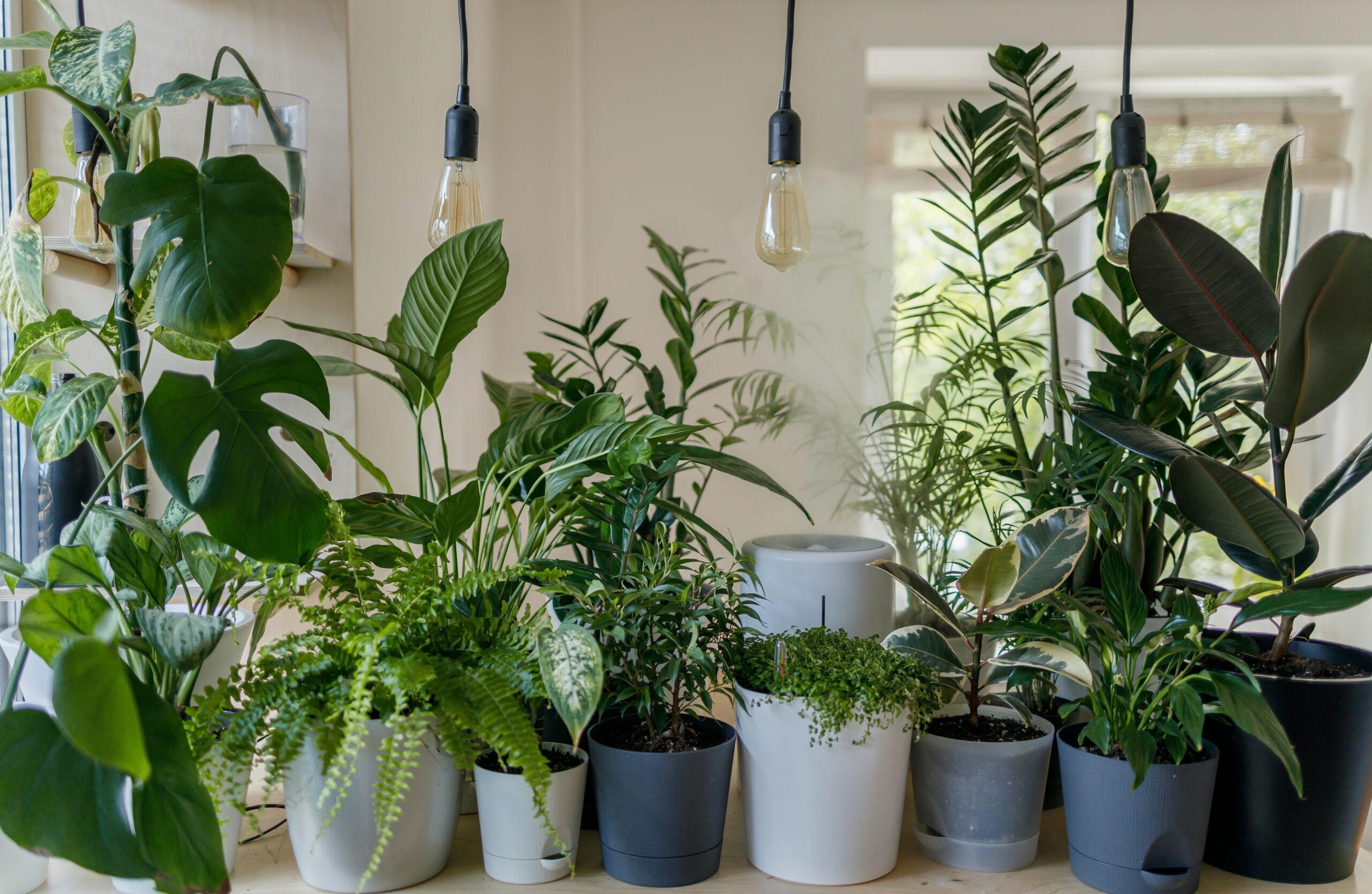Date of the last update: 25.04.2023
For many people, a house becomes a home once the greenery is in place. Surrounding yourself with plants both at home and in the office has numerous benefits: simply seeing plants around you has been proven to reduce stress, increase creativity, and of course, indoor plants transform CO2 into oxygen for a purified indoor environment where you can thrive! We receive these benefits by simply being surrounded by indoor plants, but there is a whole different level of indoor ecotherapy, whereby consciously engaging with indoor plants can boost your well-being even further. Curious to know how?
Table of contents:
- Creating a green corner of comfort, tailored to your desires
- Consider your needs
- Actively engaging with your plants
- Keeping the company of plants
You can read this article in 3 minutes.
Creating a green corner of comfort, tailored to your desires
First of all, design your space to your needs and taste. Make the most of the space you have, even if it’s limited. Empty corners can be used for greenery in many ways, including using hanging plants to decorate plain walls. Whilst it’s important to think about which plants work well in your climate, as you plan your green space, begin by imagining your favourite landscape – do you yearn for the seaside, or wish you lived in the forest? Or, perhaps a house in the desert is your lifelong desire. Whatever your preferences, recreate this landscape in your home, finding the corresponding indoor plants that will transport you to your favourite ecosystems – extra benefit, maybe you won’t feel quite as impatient to travel to the other side of the world for a little longer. Another way to choose plants is by reflecting on your memories. Do you have any childhood memories related to plants? Perhaps from your family home, or other places you’ve lived. Whatever approach you use, choose plants that will make you smile.
Check out also: How to make a forest in a jar
Consider your needs

Do you live in an urban environment? Most of us do, and outside air pollution unfortunately makes its way into our homes. In fact, indoor air pollution is considered a top threat to public health. So, how about doing your lungs a favour, and making yourself feel healthier by choosing the best plants for air purification? Top air-purifying plants include the peace lily, aloe vera, various species of ivy and fern, as well as the robust snake plant. A challenge for many of us is that indoor spaces sometimes don’t receive much light, but this shouldn’t get in the way of creating a green oasis. Some of the best plants for shady environments include the snake plant, chamaedorea, ivy, fern, and the spider plant, though there are plenty more to choose from. Consult your nearest gardening centre and you’ll receive the guidance you need.
Actively engaging with your plants

We can engage with indoor plants either passively and/or actively. Simply seeing plants has been proven to reduce cortisol levels, which is one example of significantly benefiting from plants through passive engagement. However, the benefits are multiplied if you actively engage with plants. Touch the plants, feel their unique textures. Touching plants has been shown to help us release endorphins, improving our mood and your sense of connectedness to the present moment through the senses. At the same time, touching plants benefits the plants themselves, as the touch mimics the contact with wind and other plants the plants would usually experience outdoors. By engaging with plants this way, you’ll help them grow stronger.
Smell your plants, and expand your awareness of scent. Even better, smell the soil, and inhale its healthy immune system-boosting microbes! Many people find plant care a very therapeutic activity. To keep your plants alive, you must keep an eye out for them like you would for a loved one – does it have enough water? Does it have enough light? How else can I help it grow? Taking care of a living being is a responsibility, and taking responsibility for something beautiful is an enriching experience.
Keeping the company of plants
This may sound amusing, but indoor plants can begin to feel like friends, each with their own personality. Give your plants names! At the end of a stressful day, you’ll arrive home to your green oasis, and your loyal friends will welcome you back into a home with clean air that’ll rebalance your hormones, keep you quiet company, and bring you a sense of calm.
Indoor plants are frequently overlooked, but truly, caring for plants is a tried and tested method to care for yourself in the process!
Sources:
Chalquist, C. (2009). A Look at the Ecotherapy Research Evidence. Ecopsychology, 1(2)
United States Environmental Protection Agency (2021). Indoor Air Quality: What are the trends in indoor air quality and their effects on human health? EPA

